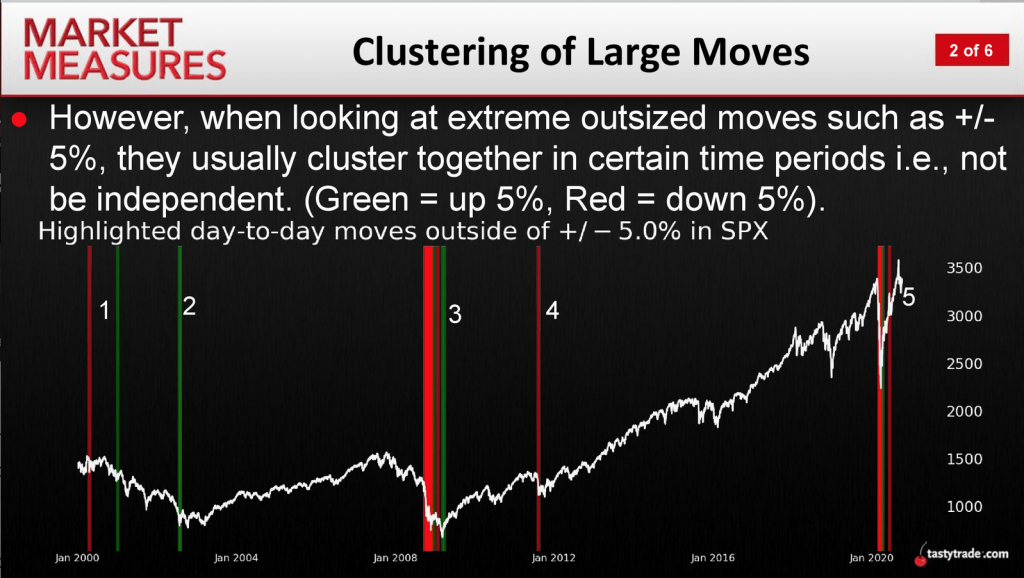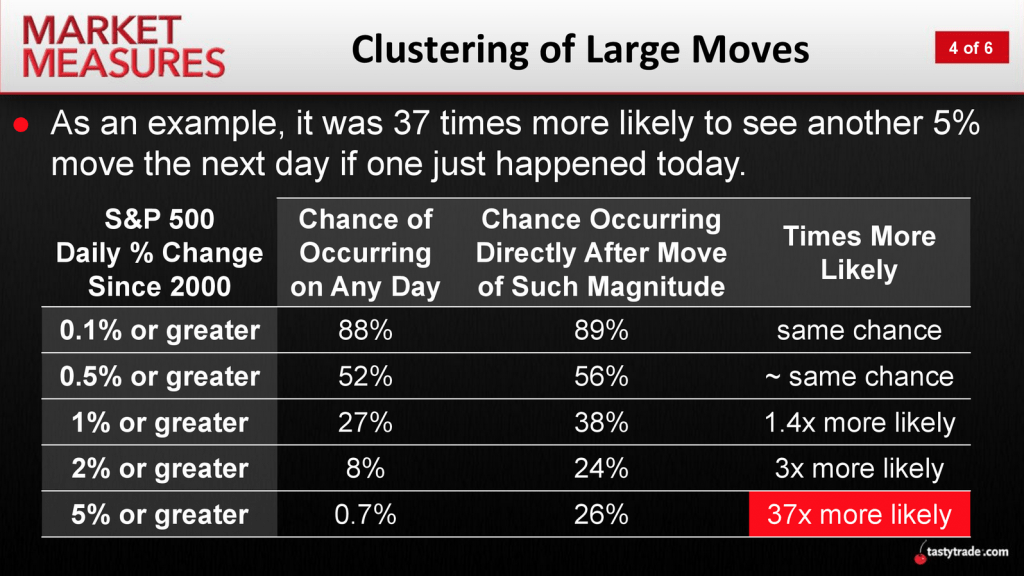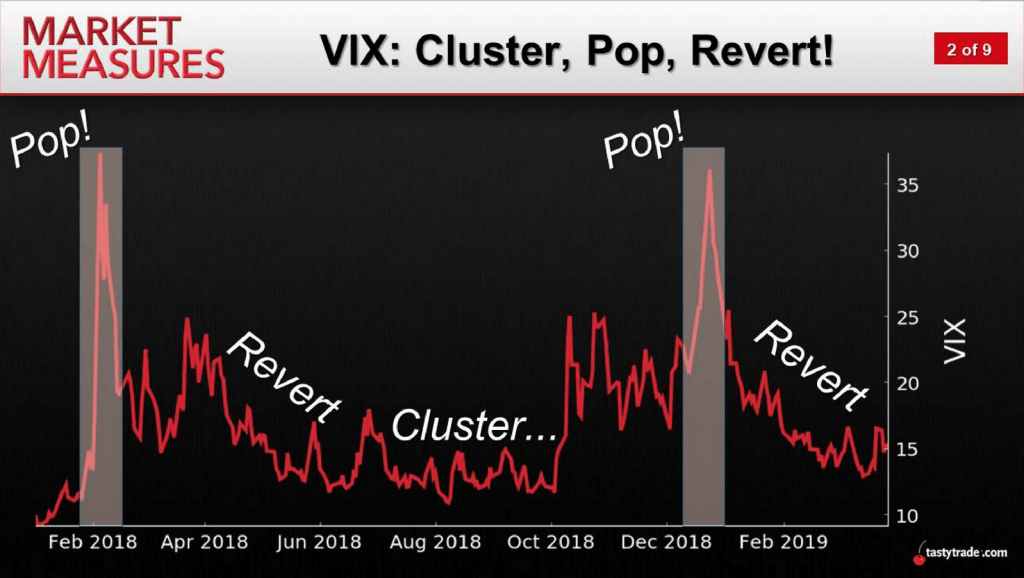Tracking Big Movements in Stock Market Indexes

In just a few weeks, two important events will be revealed to the financial markets: the results of the presidential election and the results of Phase 3 clinical trials for a front-running COVID-19 vaccine.
The VIX, which recently traded up to 30, provides evidence that market participants are expecting some large market moves in the near future, which may be linked to these upcoming revelations. And should a period of extreme volatility materialize, many investors and traders are likely asking themselves how they might deal with such an environment.
Readers asking these questions are encouraged to review a new installment of Market Measures on the tastytrade financial network. The focus of this episode is “extremely large moves” in the market, and particularly tastytrade research that illustrates how such moves tend to historically cluster together.
As one can see in the graphics below, moves of 5% or more—typically defined as “huge moves” in an index—tend to cluster together. On the other hand, smaller magnitude moves (especially 1% or below) tend to be a lot more random and unpredictable.


As one can see in the second graphic above, the likelihood of a very large move in the financial markets (>5%) on any given day is fairly small, at 0.7%. However, once a very large move has occurred, the likelihood that another extremely large move will follow it is much higher.
According to tastytrade research, a move of 5% or more is 37 times more likely to occur after the first instance has been observed.
Interestingly, this data provides further validation of previous tastytrade research focusing on the VIX, or CBOE Volatility Index.
Last year, researchers at tastytrade noticed the VIX had started moving in a more predictable manner. Specifically, the “fear gauge” was demonstrating a tendency to cluster at compressed levels before popping aggressively to the upside and then slowly reverting back toward (and below) its historical mean.
The chart below, taken from tastytrade’s Market Measures, illustrates this “cluster, pop, revert” pattern using VIX data from 2018 and 2019.

The above behavior becomes even more illuminating when one considers the newest nugget of research: big moves in indexes (>5%) tend to cluster together.
It would appear that stringing together these big moves tends to account for the “pop” in VIX. That, in turn, suggests special vigilance and adherence to risk management is advisable when big moves materialize.
A natural follow-up question is, “How long do periods of elevated volatility last?”
That’s not easy to answer because the circumstances causing market volatility aren’t always the same. However, tastytrade reviewed long-term historical data in the VIX to provide further insight into how long the VIX tends to remain above a series of thresholds (on average).
For example, as highlighted in the summarized findings below, the VIX has historically required four trading days to contract from 70 to 56 (representing a 20% drop in VIX). While a decline of 60 to 48 in the VIX has, on average, taken 23.5 trading days.
Taken together, the above means that investors and traders should pay close attention when “big moves” materialize in the marketplace. This environment will almost always be accompanied by an inflated VIX.
During these tumultuous periods, investors and traders can use the above figures as a guideline for how long the VIX might remain above a given threshold, and how long it might take for the VIX to decline further.
Readers concerned about big moves materializing in the market in the coming weeks may want to review the following tastytrade research in more detail when scheduling allows:
- Market Measures: Clustering of Large Moves
- Market Measures: VIX: Cluster, Pop, Revert
- Market Measures: Rates of IV Contraction
Sage Anderson is a pseudonym. The contributor has an extensive background in trading equity derivatives and managing volatility-based portfolios as a former prop trading firm employee. The contributor is not an employee of Luckbox, tastytrade or any affiliated companies. Readers can direct questions about any of the topics covered in this blog post, or any other trading-related subject, to support@luckboxmagazine.com.



















